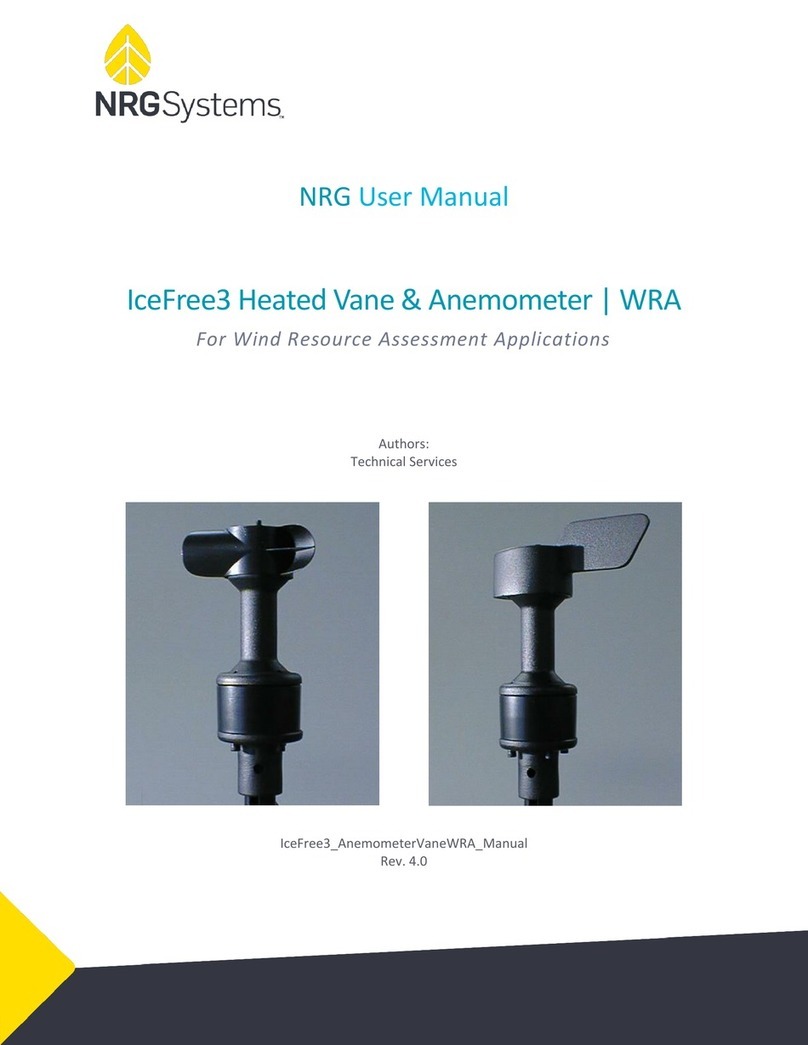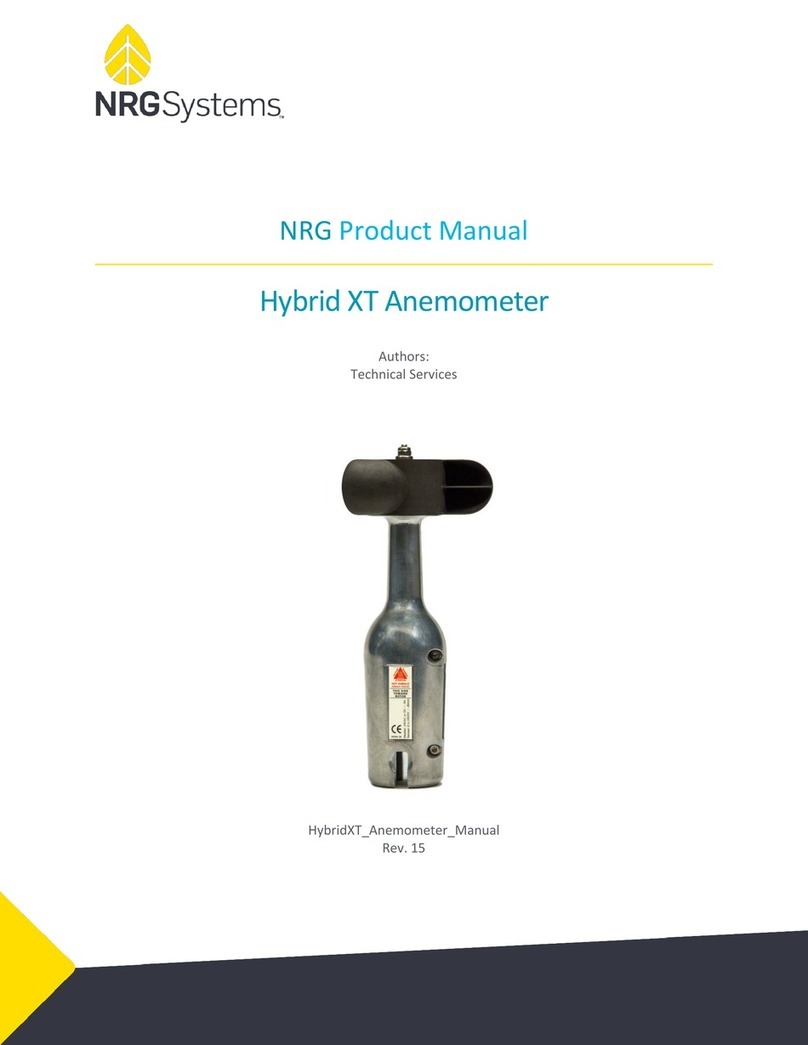
SRA System | Soiling Measurement Kit
SRA Soiling Measurement Kit Instructions
Rev. 6.0
support@nrgsystems.com | Page 2
1 November 2017
TABLE OF CONTENTS
INTRODUCTION 4
MATERIALS & TOOLS 4
Inside the Kit................................................................................................................. 4
Required Tools.............................................................................................................. 4
SECTION 1: ASSEMBLING THE SOILING MEASUREMENT KIT 5
1.1 Open and unpack all items. ..................................................................................... 5
1.2: Mount upper U-bolt to tower, ................................................................................ 6
1.3: Mount PV panel assembly to upper U-bolt.............................................................. 7
1.4: Attach the angle adjustment boom to PV assembly. ............................................... 8
1.5: Mount the angle boom to the tower....................................................................... 9
1.6: Adjust the PV panel angle..................................................................................... 10
1.7: Secure & tighten all hardware. ............................................................................. 11
SECTION 2: WIRING AND MOUNTING THE INTERFACE MODULE 12
2.1: Connect the 4C cable. ........................................................................................... 12
2.2: Mount DIN rail to shelter box back plate............................................................... 13
2.3: Wire the PV panels to the interface modules. ....................................................... 13
2.4: Mount the IMT Tm-V-4090 Temperature Amplifier Boxes. .................................... 14






























